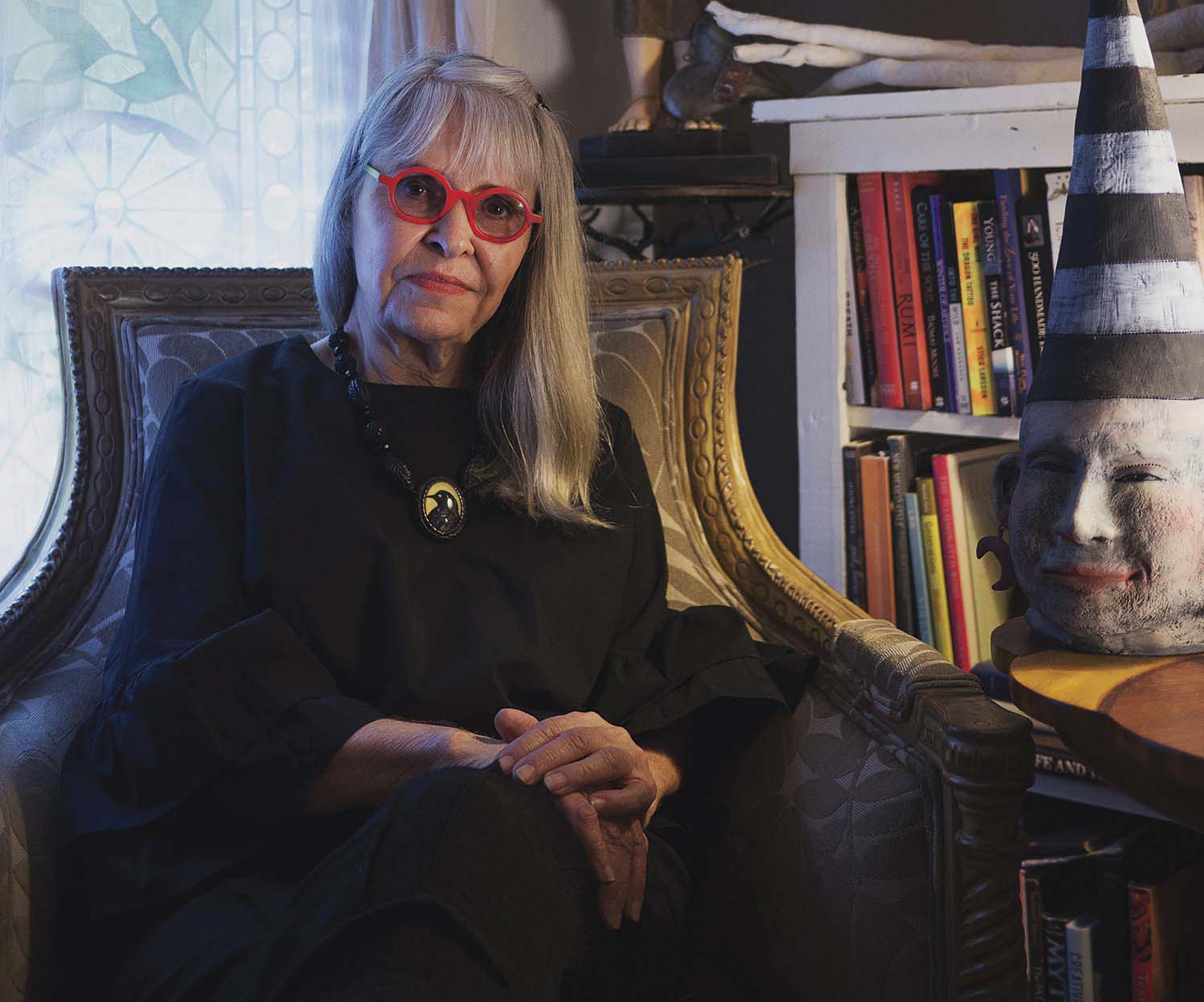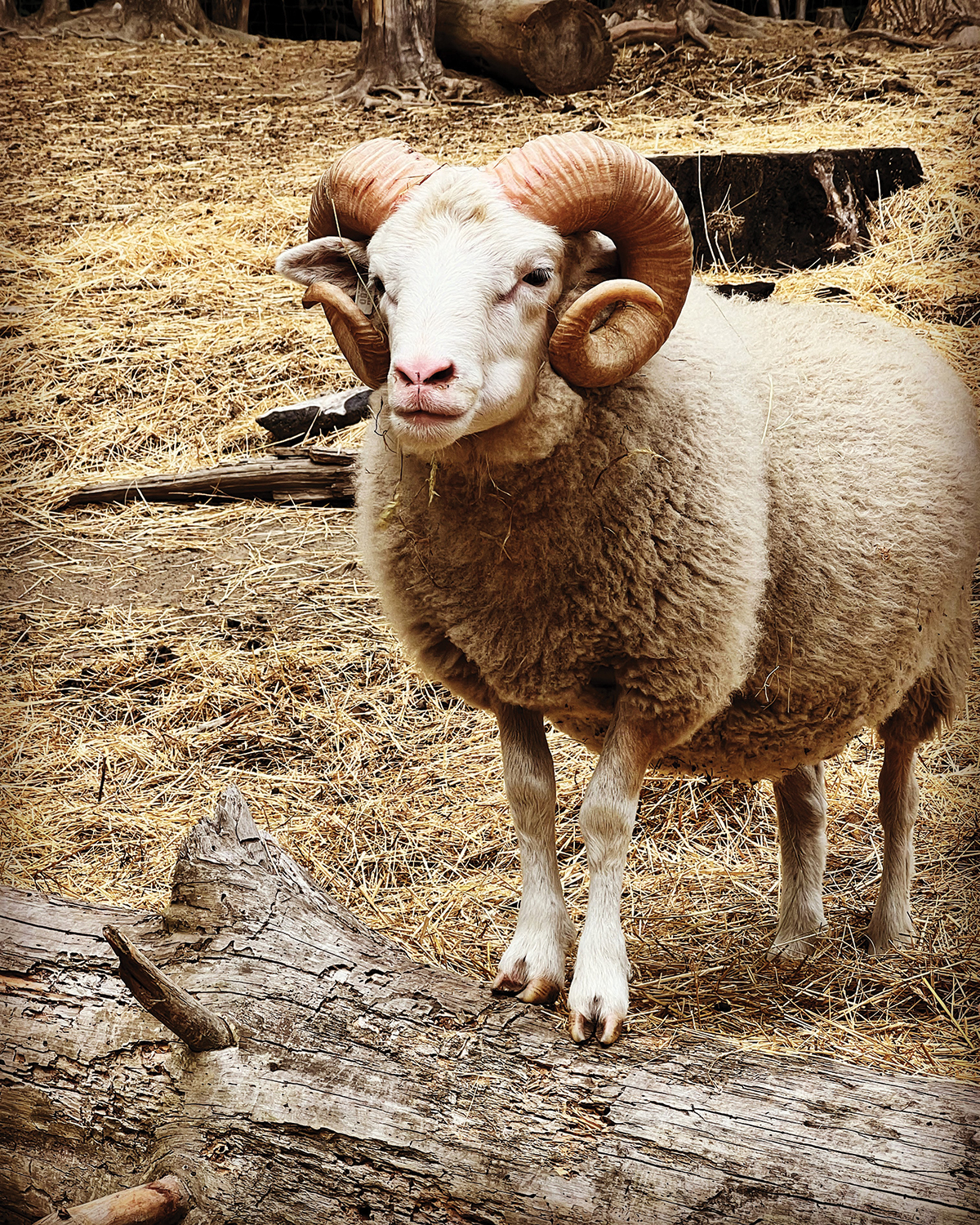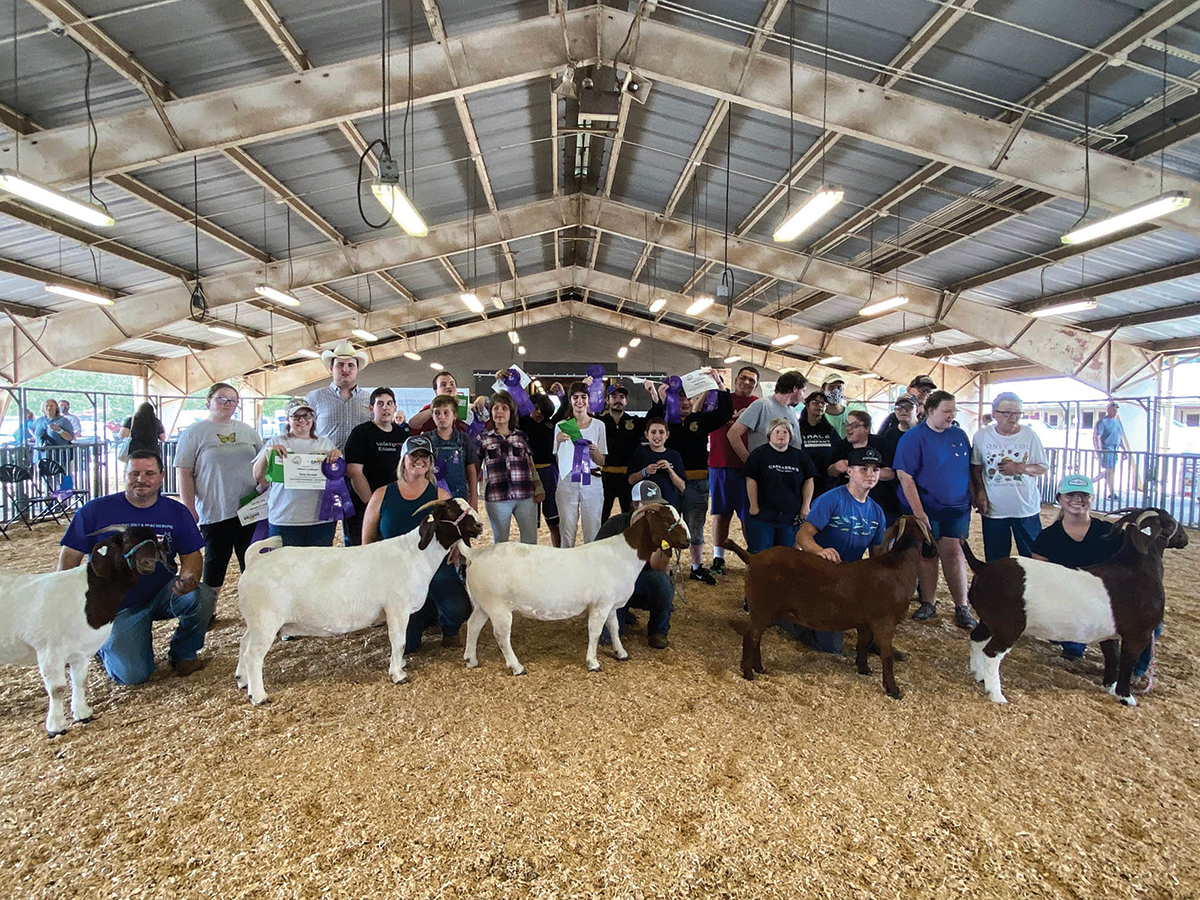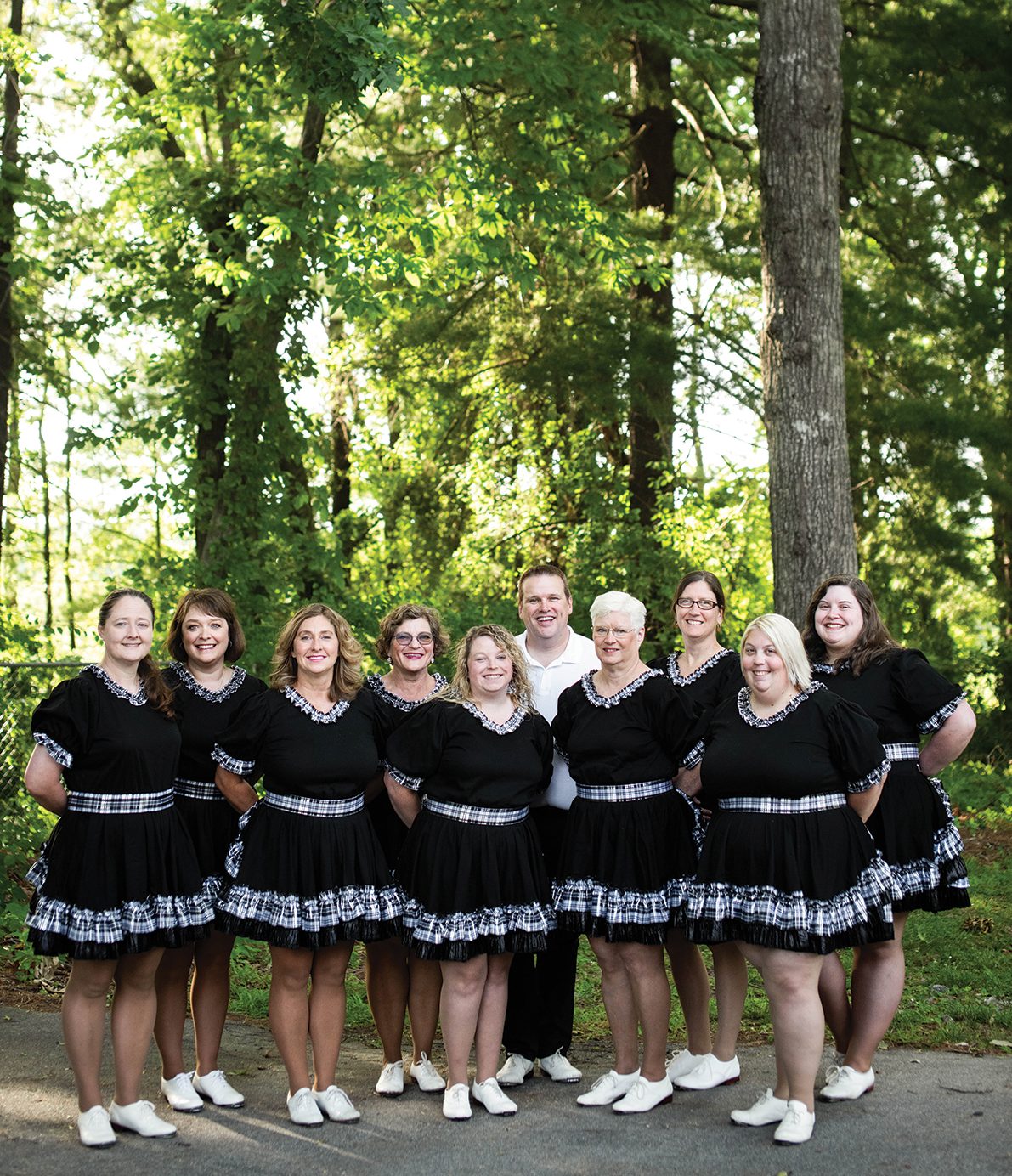
Katie Gardenia didn’t have dolls as a child, but she more than made up for that in adulthood, crafting unusual art dolls that are collected worldwide. Photo by Rimas Zailskas
Katie Gardenia remembers her very first handmade doll, the Eve which has been followed in the intervening 40-odd years by enough daughters to populate a small town. “I didn’t have dolls as a child,” Katie recalls of her lonely years growing up in San Antonio, Texas — years spent partly in an orphanage. “I made my first doll when I was 33 and living in the mountains up near Burnsville.”
That would have been during the 1970s, when Katie, now in her seventh decade, was part of the utopian community known as Celo (still thriving), and before she embarked on a peripatetic career that’s included not only her famous fiber-art dolls but also seven restaurants, 34 homes, a company that once employed 300 workers making handbags from lunch boxes, several marriages, and a memoir.
Along the way she adopted the name Katie Gardenia because, as she once told an interviewer, she just didn’t like her birth name. Two years ago, Katie bought the old post-office building in Flat Rock and returned to the mountains after decades living on the west Florida coast, where her famous restaurant The Bubble Room and its colorful cast of characters produced the memoir A Bubble Moment, published six years ago.

Photo by Rimas Zailskas
It’s the dolls that have been a constant through all the flux and upheaval. The enigmatic figures, no two alike, are comprised of all-natural materials drawn from a collection of wood, shells, feathers, acorns, and leaves that occupies part of Katie’s renovated new home. The dolls’ faces are made of pima cotton that Katie hand-dyes in Japanese green tea before she cuts out a pattern and hand-stitches each face using silk embroidery thread. German chalk adds color to the face. “For their bodies, I use anything at hand and make their clothing out of cotton, wool, silk, whatever I can find,” Katie explains. “I hand-dye the fleece, some of which comes from the goats at Connemara [the Carl Sandburg Home] across the street, and some from the llamas and alpacas I knew in Florida. And I have a long-haired dog who contributes, even if he goes and hides under the bed when he sees me coming with the brush.”
From these natural sources a kind of sanctity is bestowed on each doll, grounded in the earth but reaching for a spiritual realm. To Katie, they’re like the beneficent saints of the Latin culture she absorbed in San Antonio and, later, during a stay in Santa Fe, New Mexico. “Hispanics believe the santos create miracles,” Katie says, recalling one doll whose creation was a kind of a miracle in itself. “I was stitching her eyes, which were a really deep emerald blue, and they came out looking up at the heavens. Her arms seemed to be reaching toward the sky, and I dressed her all in white from a piece of an old French wedding gown that I beaded. She just turned into a saint.”

Photo by Rimas Zailskas
Katie estimates she’s made close to 3,000 dolls over the years, prized by collectors all over the world for their hopeful spirit, playful nature, and inventive components. They ride bicycles, sprout elaborate feathered or fleeced headdresses, or wear birds made from air-dried clay on their heads. The ones born during Katie’s coastal Florida years may sport mermaid tails or fins, while more recent dolls reflect the earthier bond of the mountains with twigs and pebbles. The occasional male figure appears, too. “I was working on one piece in Florida for a fundraiser to raise money for an animal-welfare organization,” Katie remembers. “I couldn’t decide if it was going to be male or female. It so happened my back was killing me, so I went to a chiropractor and while he was treating me I told him about this piece and my confusion. He said it was probably because I was trying to get out my inner male side. He was right, because when I went back to work on the doll, it turned into a Pied Piper figure.” What’s more, she reports, “the fundraiser produced $4,000 for the organization.”
Other handcrafted items flow from Katie’s hands, too — hand-stitched pillows and scarves, for example, which will join the more than 30 dolls she’ll exhibit this month at the Southeastern Animal Fiber Fair. Preparation for the show has occupied much of her time since she finished redoing her home (the original post-office structure dates from 1836, and, in a cosmic coincidence, its immediately prior occupant was a Raggedy Ann doll museum). “I spend most of my time alone with my dog, and my work is my meditation,” Katie says. “I go into another whole fairy-tale world. I guess I’m a kind of recluse. But I’m very happy with my life.”
Katie Gardenia will exhibit at the Southeastern Animal Fiber Fair at the WNC Agricultural Center in Fletcher October 27-29 (saffsite.org). An online store is in the works at etsy.com. Katie also welcomes visitors to her studio at 2622 Greenville Hwy., Flat Rock, Tuesday through Saturday, 12-5pm. For more information, see katiegardenia.com.



